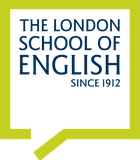The History of Halloween

A Halloween scene (stock image)
Halloween may make you think of children running around in sheets with eye holes cut out, of houses covered in fake cobwebs and spooky ghosts, of pumpkins with creepy faces sitting in front of houses. Or it may make you think of American high school parties where Halloween celebrations often consist of girls wearing less than usual and boys dressed in sports uniforms playing “beer pong” and causing trouble.
Our modern Halloween is about fun and games. However, Halloween is actually a ritual dating back thousands of years which has evolved over the centuries. It once held significant meaning for many people.
The origins of Halloween
Halloween, or “Hallowe’en”, can be traced back to "Samhain", an ancient Celtic festival that marked the end of the summer harvest period and the start of winter. It also symbolised the boundary between the world of the living and the world of the dead. The Celts believed that on October 31st the spirits of their dead relatives would rise and visit the mortal world (the world of living people), so huge fires were lit in each village to scare off evil spirits.
The Celtic priests, known as Druids, were in charge of the Samhain festivities and were also responsible for lighting every home’s fireplace with embers from the sacred bonfire (a large fire), to ensure the houses and their residents were protected and kept warm throughout the cold, dark months ahead.
How the Romans influenced Halloween
When the Romans invaded in 43 AD, they conquered much of the Celtic land. However, many Celtic traditions influenced Roman celebrations. In turn, our modern society has kept some of the Roman traditions. For instance, apple bobbing, a game in which you try to bite an apple floating in water without using your hands, comes from Roman times. It can be explained by the Roman goddess of fruit and trees, Pomona, whose symbol was an apple.

Apples have long been associated with Halloween (stock image)
Christianity arrives in the UK
In the early 5th century, new conquerors began came from mainland Europe. In the years that followed a new religion also arrived. The introduction of Christianity brought new teachings and festivals into Britain, including a feast called “All Hallows’ Day” or “All Saints Day” which was celebrated on November 1st. The purpose of this festival was to remember those who had died for their beliefs. All Hallow’s Day was originally celebrated on May 13th, but the Pope moved the date to November 1st sometime in the 8th century.
The reason for changing the date was probably an attempt to absorb the Celtic Samhain festival into a church-approved celebration. The evening of Samhain thus became known as “All-hallows-even” then “Hallow Eve” and later “Hallowe’en”, now known as Halloween. Apart from being an excuse to dress up, eat chocolate and scare or play tricks on friends and family, Halloween is still an important night for many people, who believe that it is the night of the year when the spirit world is closest to the mortal world, and the presence of faeries, ghosts and magic is strongest.
The development of modern Halloween activities
There are multiple traditions associated with Halloween, and while we have the USA to thank for some of the more modern activities, in fact some of these activities are rooted in British tradition.
Pumpkin carving is an American introduction, but for centuries in Europe, people have been carving turnips and other root vegetables into strange faces known as “Jack-o-lanterns” to ward off evil spirits. This practice is believed to have come from an Irish folktale, in which a man named Jack is cursed to roam the Earth for all time with only a burning coal inside a hollow turnip to provide him with light, as punishment for tricking the devil. Across Britain people carved scary faces into vegetables and placed them near doorways and windows to keep Jack and other demons away. When immigrants to the USA took these traditions with them, they soon found that pumpkins were much easier to carve into and thus made perfect jack-o-lanterns!
Another tradition was “guising”, popular in Scotland and Ireland. When ‘guising’ people would dress up and wear masks to try and fool or hide from the evil spirits. Poor people would also go from door to door asking for food in exchange for prayers against malevolent supernatural visitors. Some Catholics continued this practice after the Protestant Reformation, and it was also carried over to the USA towards the mid-19th century, with waves of Irish and Scottish immigrants continuing the tradition.

Dressing up for Halloween used to be known as "guising"
Halloween today
As drinking and fun became a bigger part of the celebrations, younger participants would stuff cabbages into chimneys and hit each other with bags of flour. This introduced the “trick” element of the popular modern Halloween pastime of “trick-or-treating”. As the USA became more suburban in the mid-20th century, it developed into the more child-friendly activity we know today.
Whilst generally associated with children, Halloween remains popular among adults and could be an opportunity for you to get creative, dress up in a Halloween costume and discover your scariest side, be it werewolf, ghost or zombie!
Vocabulary
- Beer pong (noun) A game often associated with students in the US. It’s a drinking game in which participants must throw ping-pong balls into cups of beer. When a participant succeeds in getting a ball into a cup, their opponent must drink the beer. This game is not well known among people in the UK.
- To be cursed (to do something) (verb) - To curse a person is to use magic to harm or punish someone. If upset a witch or wizard, they may curse you to lose your money or never fall in love (for example). In our everyday lives, we sometimes say “I must be cursed!” When we feel like many bad things are happening to us.
- To roam (verb) - To move or travel around, often without having a clear idea about where you are going.
- Malevolent (adjective) - this is a literary way of saying someone or something wants to do bad or evil things or looks like he/she/it wants to do bad or evil things. e.g. I don’t trust him, he has a malevolent look in his eyes.
- Supernatural (adjective) - this describes things like ghosts, magic and monsters. If something cannot be explained by the usual laws of science and nature, we can describe it as supernatural.
- Trick or treat (noun) - In this Halloween game, children knock on their neighbours doors and say “trick or treat”. Their neighbours then give them sweets (treats). If the neighbour doesn’t give them sweets, some children with ‘trick’ them by wrapping their car in toilet paper or pushing eggs (or worse) through their letter box.
This post was written by Peace, one of our trainers
Post your questions and comments:
Why study at The London School of English?
- Rated “Excellent” based on over 1750 independent client reviews
Over 100 years’ experience
Tailored training delivers clear results
Memorable experiences in London and online










